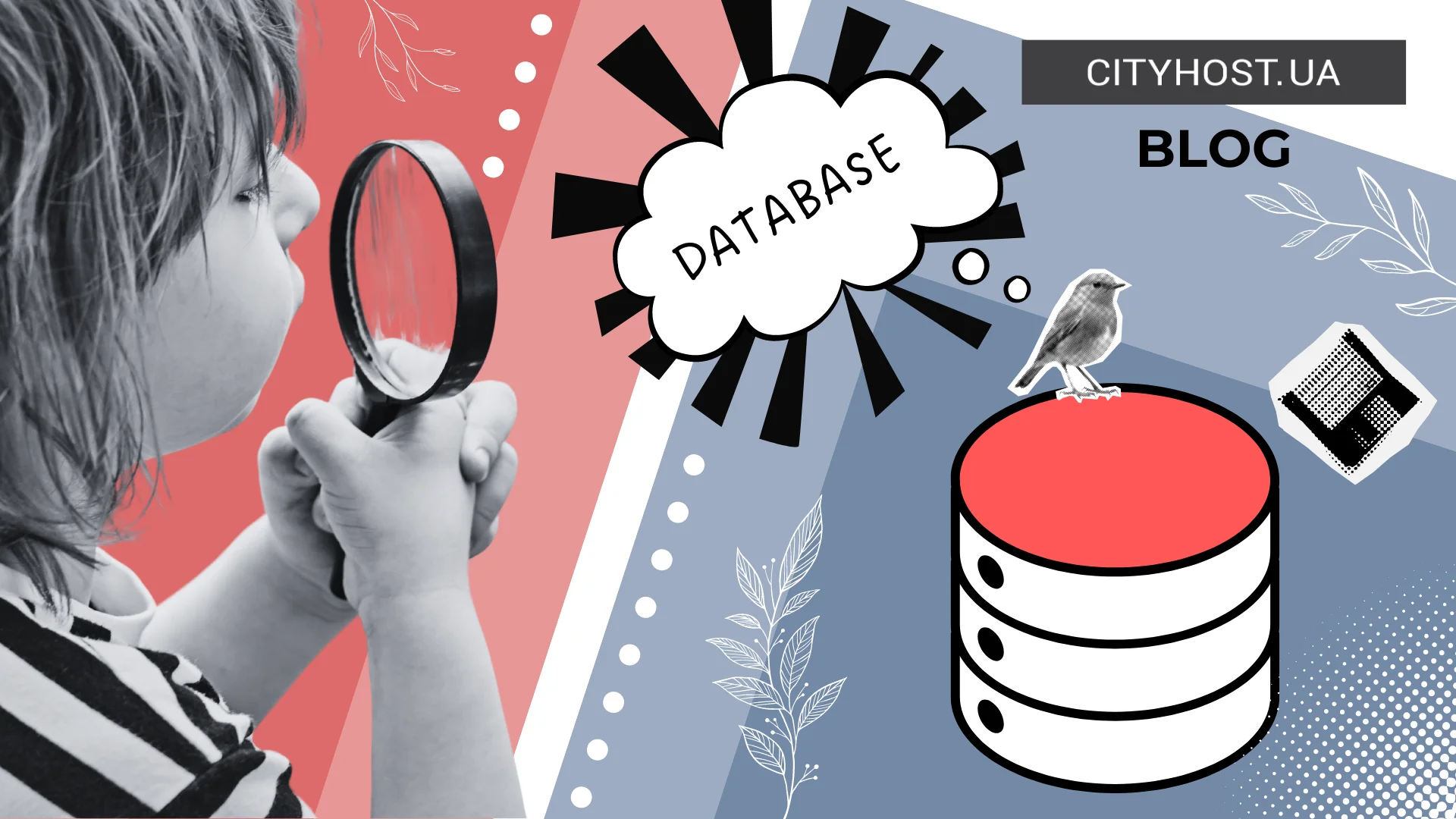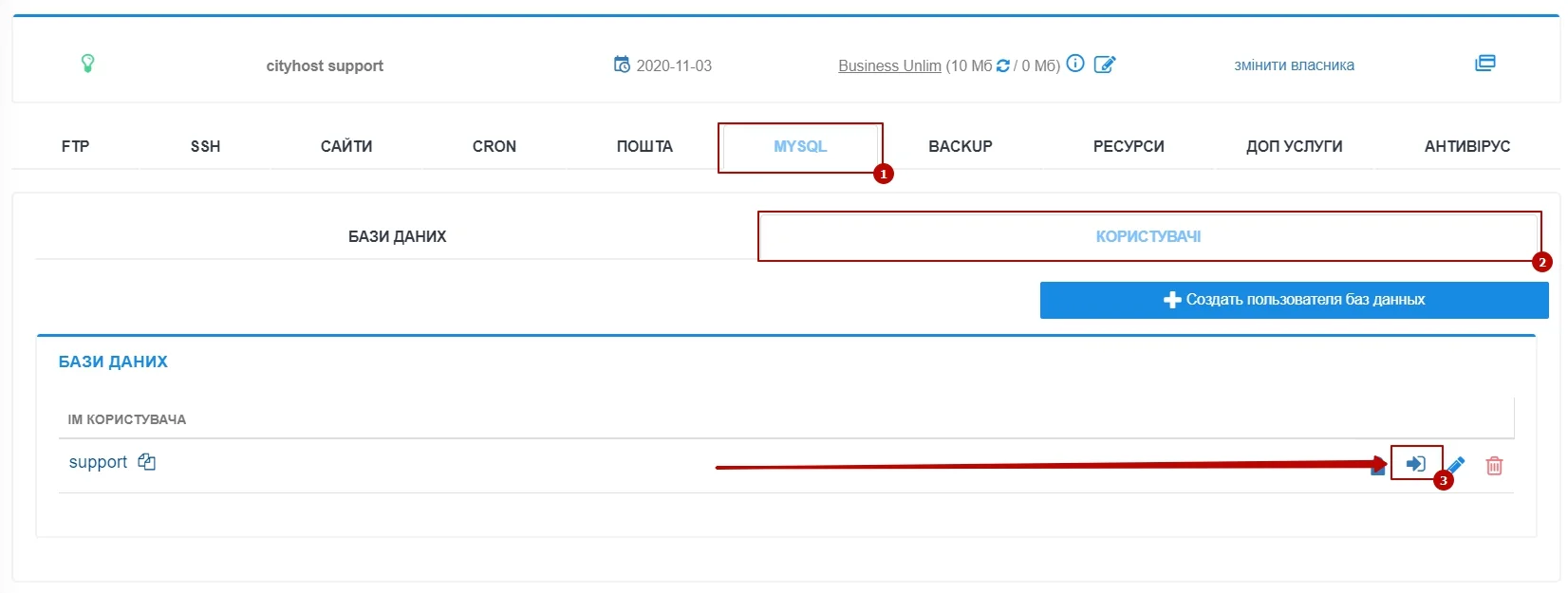
- What is a database and why is it needed
- Why a website needs a database
- What types of databases are there: from classic to innovative
- What is a DBMS and why MySQL is needed
- How to create a new website database
The rapid increase in the amount of information is one of the main challenges for modern society. Every day we encounter vast volumes of data, which require more and more time and resources to process. Databases and management systems simplify this task by allowing information to be conveniently organized, easily supplemented, and modified.
And although modern providers offer to buy hosting with convenient solutions for managing web resources, understanding what a database is and how it works helps to effectively manage the content of the site, making it more functional and user-friendly. Moreover, easy access to the database allows for fine-tuning, and in critical situations, it enables the instant resolution of problems and the restoration of the functionality of the internet project.
Read also: Where is the WordPress database stored
What is a database and why is it needed
A database (DB) is a set of information organized according to certain rules (for example, posts, comments, usernames (nicknames), and the like) that can be easily edited and supplemented. Classical databases are organized in the form of a table: each row acts as a separate record, and a column as its attribute. SQL is used to perform queries. Convenient management of the entire database is provided by a database management system (DBMS), such as MySQL.
How is a database different from an Excel table? A spreadsheet can store a small amount of information without the ability to perform complex operations and is designed for one or a small number of people. In contrast, a database can store a huge amount of organized information, allows for various actions, and many users can have safe and fast access to it.
More specifically, a database performs the following functions:
- organization of information — allows for the structured storage of large volumes of data;
- easy access to information — quickly retrieves the necessary data, regardless of the amount, thanks to SQL queries;
- teamwork — many users can simultaneously work with the database, for example, adding or editing materials;
- reliable protection — DBMSs are equipped with authentication and authorization mechanisms, allowing for backup;
- planning — analytical programs use databases, giving entrepreneurs the opportunity to understand trends, thereby improving business processes and customer experience;
- convenient expansion — databases can handle large volumes of information, simplifying project scaling.
Databases are used in all fields, including banking and educational institutions, manufacturing, and e-commerce companies. For example, online stores store information about products (names, descriptions, prices, availability), track orders, and analyze sales to identify areas for improvement to increase revenue. Healthcare providers can securely store patients' personal data thanks to modern DBMSs with multi-level security systems. Financial institutions can more effectively manage customer accounts, transactions, and credit histories, plus assess credit risk and detect fraudsters.
Read also: What is a Domain and How is it Different from Hosting
Why a website needs a database
To answer this question, one must understand the diversity of web resources. When it comes to static web projects, for example, a classic HTML Landing Page may not need a database at all. It stores content as separate files, and the source data is rarely changed, and then only by the website administrator.
However, there are many other types of websites, such as online stores, news portals, blogs, and so on. These have more information and use user data (e.g., comments), so the content of the web resource is constantly changing. On such sites, a database performs the following functions:
- stores articles, posts, news, and user comments, as well as product information, including descriptions, prices, and availability;
- protects user information — names (nicknames), avatars, email addresses, passwords;
- stores information from users themselves — ratings, messages, feedback forms, surveys, polls;
- structures data on visitor actions, including page views and clicks, allowing for analysis and improvement of the site;
- stores roles and access rights for different users (especially important on forums).
Simply put, a database for a website allows for the storage of structured information, convenient addition and editing of content, management of visitors, and quick retrieval of needed content. For example, if you decide to run a blog, a database is needed to store information about posts and comments, manage categories and tags, and simplify site navigation.
Although content management systems (WordPress, Joomla, Drupal, OpenCart, etc.) make it easy to perform all these actions, sometimes you may need to carry out specific tasks yourself. For instance, when transferring a web resource to another hosting service, you need to export and import the database. Regular database backups allow for the restoration of site functionality in an emergency, such as after an unsuccessful plugin or theme update. Additionally, complex SQL queries enable the creation of custom informative reports not available in the control panel.
What types of databases are there: from classic to innovative
Business needs are constantly changing, and the organization of information evolves accordingly. While early databases were simple systems for storing and retrieving information from files, today there are many types of databases, including models with artificial intelligence and machine learning tools for enhanced analytics and automation.
Let's explore the most common types of databases:
- Relational. The name comes from the predefined relationships between elements. Information is stored in tables linked by keys. Management is done via SQL. The most well-known relational databases are MySQL, PostgreSQL, and Oracle.
- Non-relational. These do not use SQL, hence they are called non-relational or NoSQL. While relational databases have requirements for organizing elements, non-relational databases allow for the storage and management of partially structured or unstructured information.
- Document-oriented. This type of database stores information as documents (in formats such as XML, JSON, BSON). Each document can have its own structure, providing users with greater flexibility and ease of scaling. Notable document-oriented databases include MongoDB and CouchDB.
- Object-oriented. These are represented as objects, each containing data and methods for processing it. The advantage of object-oriented databases is the simple storage of diverse elements and structures, but they are more complex to use and thus less common.
- Cloud. Structured or unstructured data is stored in a public, private, or hybrid environment. To freely use the data, users only need to pay a monthly fee. Examples of cloud databases include Amazon RDS, Google Cloud SQL, and Microsoft Azure SQL Database. Key advantages include easy scalability, high availability, automatic backups, and reduced infrastructure costs.
A separate category is the newest type — self-managing databases. They use machine learning to automate management, tuning, optimization, and security, partially or fully taking over the role of a database administrator. The most popular example is Oracle Autonomous Database — a system that supports all data types and analytics tools, offers quick deployment of new autonomous databases of any size, easy cloud migration, and many other features.
Read also: What Are Cookies and Why Are They Needed
What is a DBMS and why MySQL is needed
A DBMS (Database Management System) is specialized software for creating, editing, and securing databases. It serves as an interface between the user and the database, allowing operations on records in a convenient environment, even without technical knowledge. Special attention is given to innovative security methods, including two-step authentication and backup.

An example of a DBMS is MySQL with the phpMyAdmin interface
We have already mentioned well-known DBMS for some types of databases. They provide centralized file management, support multi-user work and synchronization of changes, offer security tools, and can scale according to business needs. However, for website owners, the MySQL DBMS is particularly useful for many reasons:
- open source — the system can be used for free, which is especially attractive for startups and small businesses;
- wide support — most providers support this system (Cityhost offers MySQL 5.7+ with phpMyAdmin management interface);
- compatibility with PHP — excellent compatibility with one of the most popular programming languages allows for the creation of dynamic websites;
- good optimization — it can handle large volumes of requests without reducing page load speed;
- data preservation — it supports recovery mechanisms, enabling the correct return of information after failures.
There are many examples of MySQL DBMS usage. Popular CMS (WordPress, Joomla, and Drupal) use it as the primary database for storing and managing content. E-commerce platforms (Magento, PrestaShop, WooCommerce) use MySQL for managing products, orders, and users. Some popular platforms for creating forums and social networks, such as phpBB and vBulletin, store data about users, messages, and other content through this system.
Read also: TOP-3 CMS for creating a blog
How to create a new website database
On any Cityhost plan, you have free access to MySQL 5.7+ with the phpMyAdmin management interface. To log into phpMyAdmin, go to the user account, then Hosting 2.0 → Management. Then select MySQL → Users and click on the login icon, as shown in the screenshot.

Thanks to Cityhost's user-friendly interface, you can create a website database in a few clicks:
- Go to the user panel.
- Find the Hosting 2.0 → Management tab.
- On the MySQL tab, select Databases.
- Click the Create Database button.
- A form will appear for you to enter the information. Details are available on this page.
Although Cityhost provides a comfortable environment for managing your website without needing to edit the database manually, you can always go to phpMyAdmin and make the necessary changes. We have even created a separate page with instructions where you can learn how to create a MySQL user, change a password, perform an import or export of a large database, and more. Or you can contact the customer support service, and our specialists will help you deal with all the questions.










